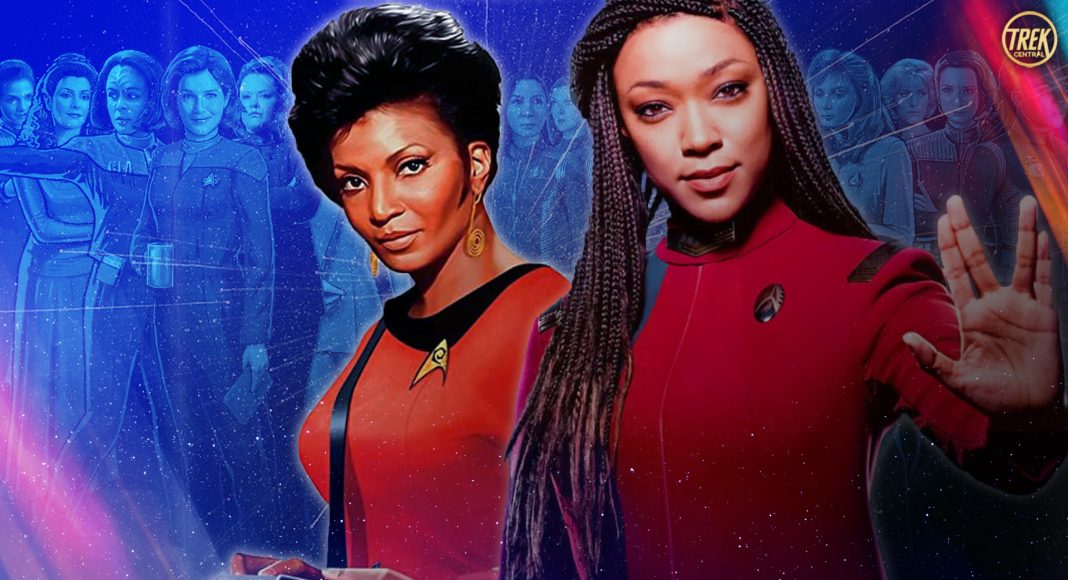In 1910, at a socialist conference in Denmark, Clara Zetkin (German feminist), established International Women’s Day (IWD) with others. She modelled it after International Labour Day. Clara stated that the feminist struggle was not just about liberation from patriarchy, but about the liberation of all humanity from toxic hierarchies. Therefore, we take a look at the Feminist Struggle in Star Trek. Additionally, Clara specifically dragged privileged colonial feminists, who advocated for their rights and excluded others.
Star Trek’s liberation ideology has often dove-tailed with Clara’s program. Additionally, figures like Star Trek: The Original Series Uhura (Nichelle Nichols) or Star Trek: Discovery’s Michael Burnam (Sonequa Martin-Green) lead the charge. Women in Trek liberate their own or other peoples, individuals, or even audiences. Though it’s not always done ideally, liberation is a consistently evolving theme.
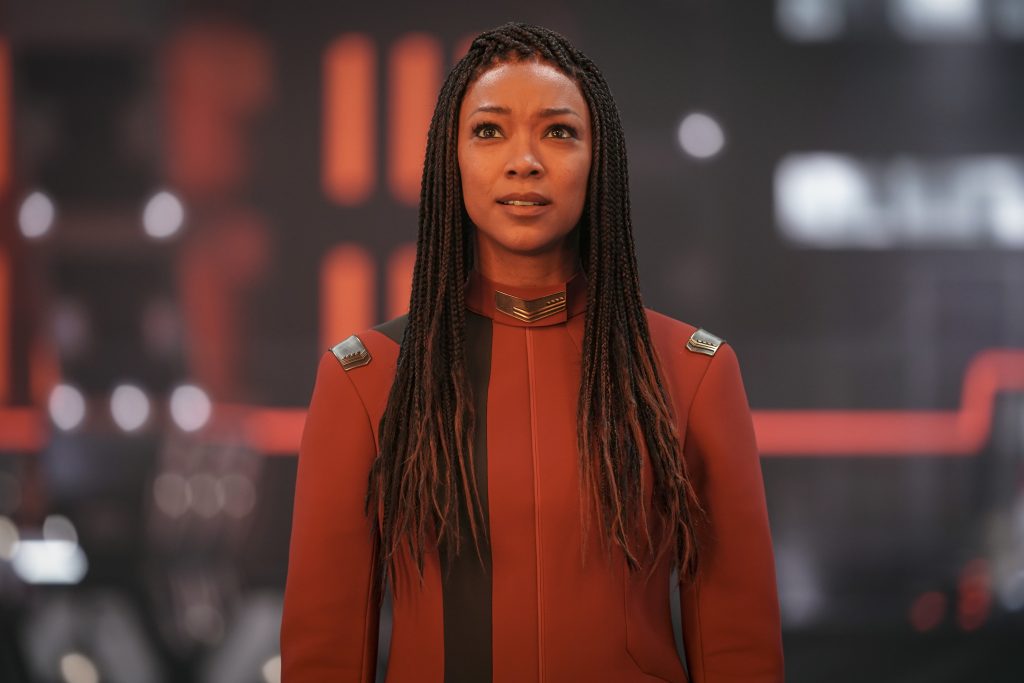
Angels in Chains
In “Angel One” (ST:TNG), an oppressive, violent matriarchy dominates men. The government of Angel One isn’t very different from any contemporary one we might know. All institutions on Angel One enforce gender roles and restrictions. Angel One’s matriarch even fetishises our favourite, responsible Lothario, Riker (Jonathan Frakes). Eventually, with the assistance of displaced federation citizens, liberation does get a rough start.
Abby Volcano, in a book of essays, writes in her essay “Police at the Borders” (a great book for those into the politics of desire) that it isn’t enough to “wear our chains backwards”. This is precisely the opposite of a struggle for liberation. If you are interested, I’ve written about queer love in this episode.

Muddy Waters
We find the most awkward and anachronistic attempt to critique patriarchy in The Original Series (ST:TOS) episode “I, Mudd”. Mudd (Roger C. Carmel) stumbles upon a few sentient androids/gynoids who have decided to serve him. They do this to keep Mudd on the planet and prevent him from causing trouble in the universe. Most are women, often multiple copies. It’s certainly another kind of ‘wearing their chains backwards’ sort of story. We could argue that this episode certainly highlights the Feminist Struggle in Star Trek.
They even created a toy wife for Mudd to assault verbally, as he wished. Mudd’s behaviour is so terrible that the TOS crew spend part of their time explaining to the androids/gynoids that all of humanity is not represented by Mudd. To be clear, Mudd’s attitudes were not far off from men’s at the time of release. The episode concludes with the wife-gynoid turning on him. In either case, the portrayal of Mudd’s wife as an object is unfortunately maintained.
“Mudd’s Women” (TOS) weaves a more problematic narrative. Three women take a drug to make themselves appear more attractive. This is Mudd’s ruse to gain wealth from isolated men who work as miners. Mudd technically does not sell these women. But, you’d be forgiven for thinking they were slaves, as little is made of the distinction. Eventually, one of the women, Eve, decides she needs the confidence to earn the love of the man she is being sold to. Lean in, I guess?
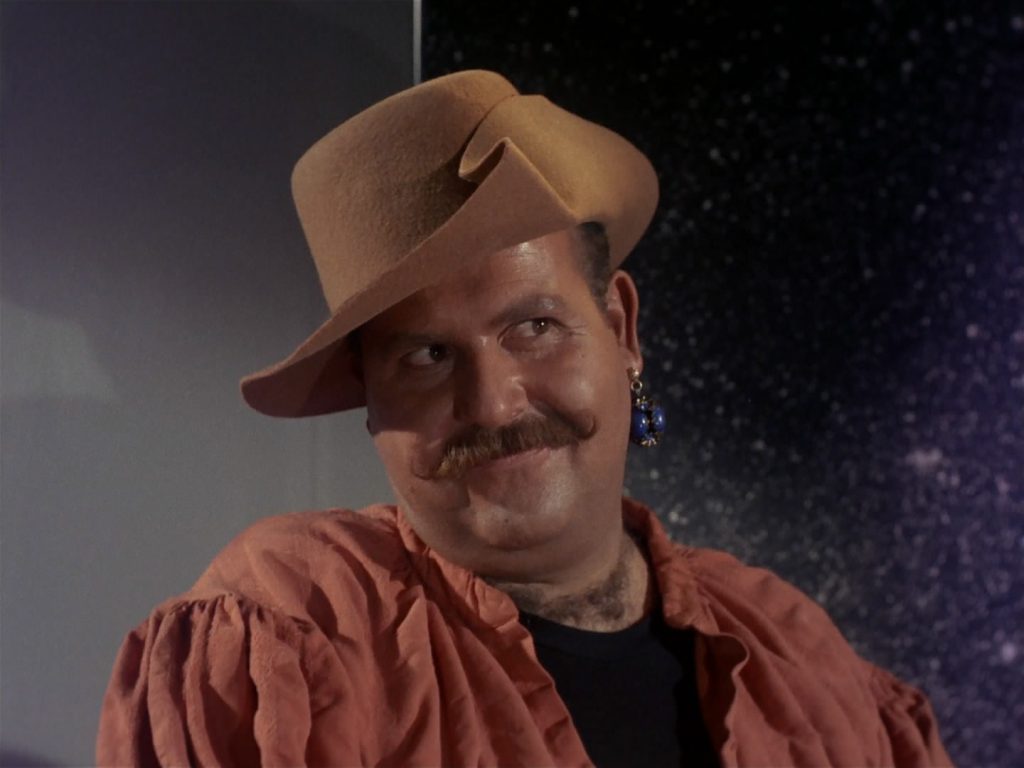
Handmaidens’ Trek
By this point, it should be clear that much liberation concerns who controls the narrative. In the ST: TNG episode “Perfect Mate”, a Kriosian named Kamala (Famke Janssen) is an “empathic metamorph” and demonstrates this for us. She can alter her personality to accommodate men. Notably, her name would mean “consort” or “blossoming lotus flower” in Sanskrit.
She is, in fact, a marriage offering to a rival planet’s representative. Picard’s honest desire is that she becomes herself, which leads her to develop her personality. Picard is clearly not comfortable with his role as gatekeeper in this process. The episode ends with her deciding to go through with the arranged marriage. She acknowledges the situation is not fair or right but wishes to help her people. Once again, Star Trek: The Next Generation highlights the Feminist Struggle in Star Trek.
The Enterprise (ST:E) episode “Cogenitor”, presents similar themes. But the ending here is much more tragic and problematic. The Vissian species enslaves its biologically necessary 3rd gender. The nonbinary “cogenitor” (Becky Wahlstrom) names themselves after Charles “Trip” Tucker (Connor Trinneer). They eventually decide to end their own life (if you need help, please click). Trip is blamed for teaching them to read?! When watching Enterprise, it sometimes feels like it hasn’t been such “a long time gettin’ from here to there”.
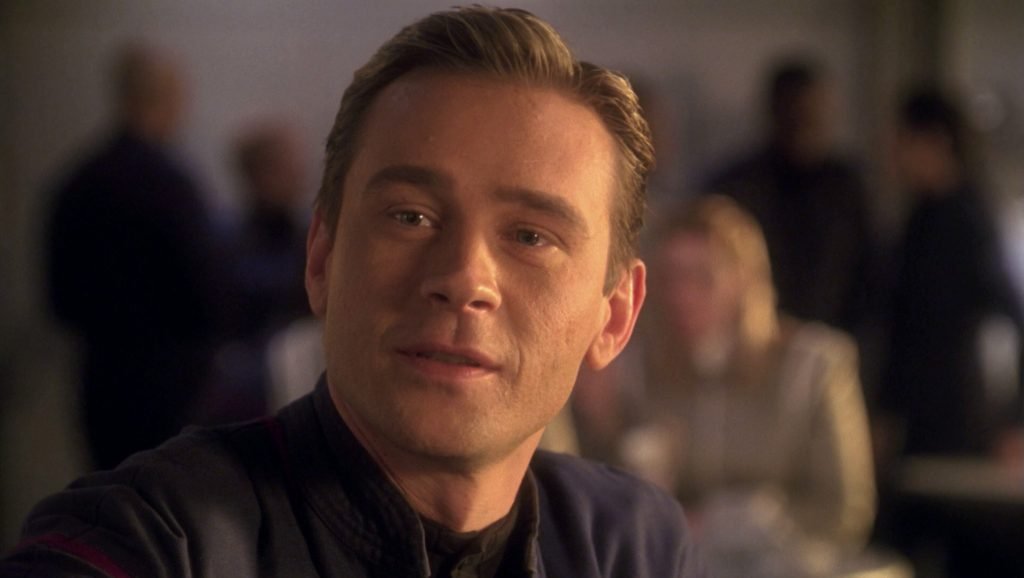
Intersectional trekking
In 1976, a US court proved that existing civil rights accommodations did not serve black women. Existing accommodations were only meant for black men or white women. Scholars developed “Intersectionality” as a primary feminist concept to deal with these situations. Intersectionality explains how nobody fits into a single category and that trying to force them leads to bad results. This allows us to be all of who we are. For example, trans-women are real women.
This is the solution to over-simplified identity politics where context is never considered and only those with power, especially within feminist struggles, have a say. Coming out of the international Black History Month, giving credit where credit is due is important.
The Dynamic Duo
Intersectionality illuminates the story arcs of some of the most influential characters in Trek history – Uhura and Michael Burnam. Or rather, more importantly, Nichols and Martin-Greene. Nichols famously almost quit TOS, but Martin Luther King Jr. admitted he was a fan, so she continued her trek. Nichols, from 1977 up until 2015, helped NASA recruit numerous women. Astronaut Mae Jemison, who Nichols inspired to join NASA, would later be invited by LeVar Burton to guest-star in the ST: TNG episode “Second Chances”. Whoopi Goldberg, a.k.a. Guinan, with many others, has also claimed that Nichol’s portrayal inspired them.
“I’m going to bring you so many qualified women and minority astronaut applicants … that if you don’t choose one, everybody in the newspapers across the country will know about it.”
Nichelle Nichols on her time with Nasa from the Washington Post “Transcript: Race in America: Mae Jemison, MD.”; retrieved 22.02.2023
Michael Burnam, though! As an orphan and outsider, she liberates the entire main universe from the mirror universe, from an AI genocide, and from the Emerald Chain.
Martin-Green hasn’t spoken about what it was like to grow up in a white-majority town in Alabama. But we know her hometown is named after a slave owner and that multiple streets are named after the genocidal maniac Andrew Jackson. In any case, Burnam’s and Uhura’s stories’ convince us of a universe where racism and sexism between humans simply do not exist. But, please, don’t forget, Nichols and Martin-Green did all the hard work!
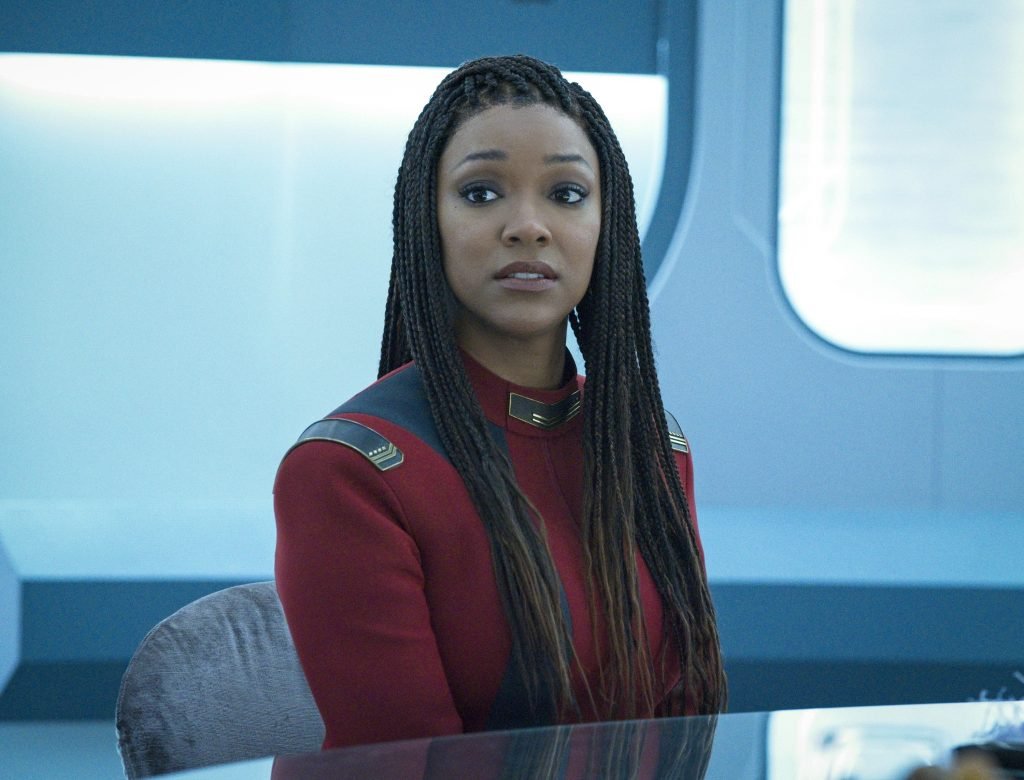
The Antidote
In the enterprise episodes “Stigma”, “Awakening”, and “Daedalus”; T’Pol (Jolene Blalock) struggles with the mind-meld-acquired Pa’nar Syndrome. This is yet another intersectional story arc. During this period of in-universe history, the diabolical Vulcan High Command consider melds immoral. Even though T’Pol acquired the syndrome via a non-consensual mind meld, she remained adamant that it shouldn’t matter how she got it.
Of course, we know that, in Trek, mind melds are a fundamental part of Vulcan culture. But this is only through T’Pol’s advocacy. She turned her disease into perhaps one of the most powerful psychic abilities in the series. Mind melding, code for “empathy”, unlocks inter-species understanding as well as helps to discover key villains. Using trauma and empathy to push progress and change minds, are both keys to compelling story-telling in Trek and to feminist liberation in general. Often pain is all we have to start with.
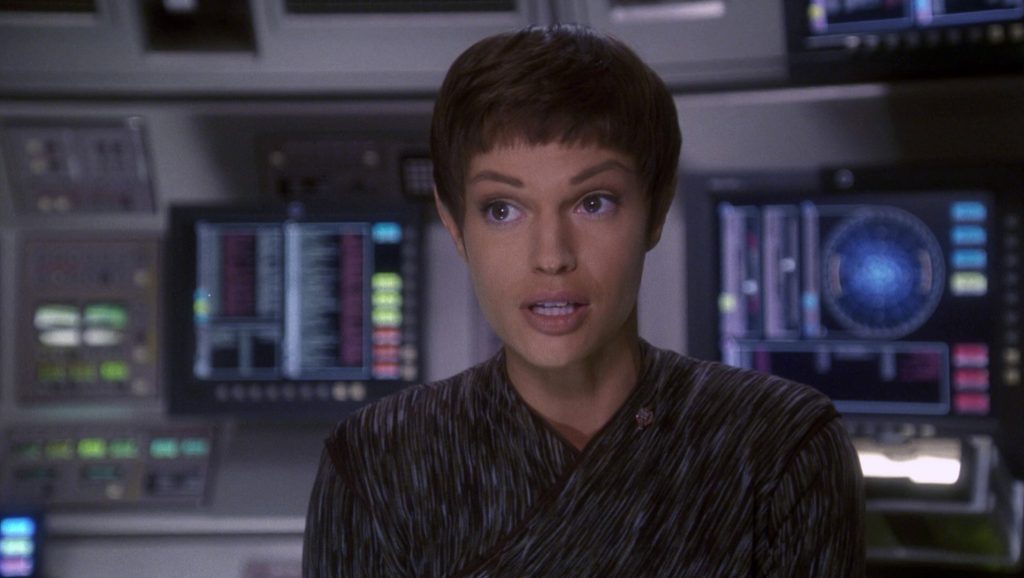
Voyager’s Endgame
The Borg queen is the ultimate privileged woman, yet she also wears her chains backwards. She dominates, colonises, and commits multiple genocides in various incarnations but cannot exist without “the collective”. The liberation of the Borg from ST: TNG to Voyager and Picard is one of the longest and most compelling arcs in the Star Trek canon. Janeway (Kate Mulgrew) and Seven (Jeri Ryan) are the fulcrum of this story. Seven’s liberation is directly tied to the end of a single genocidal Borg hegemony.
In “Sccoprion II” (ST:V), Voyager and the Borg attempt to repel the fluidic space techno-organic “species 8472” from retaliating against the whole of the main universe after a Borg assault. This time, the Borg plays the role of Mudd in “I, Mudd”. To be honest, the Borg has always played that role. They are another manifestation of the worst of humanity. In any case, the Voyager crew makes multiple attempts to reach any humanity remaining in Seven, eventually succeeding and breaking Seven’s connection to the Borg.
By the series-finale two-part episode of ST:V “Endgame”, Janeway has provided Seven with an alternative view of womanhood and humanity to that which the Borg queen Alice Krige (returning from “ST: First Contact”) represents an antithesis. The queen tempts Seven with the promise of reuniting with her assimilated family. However, this reminds Seven of what she has and would lose to give into the Borg’s ultimate power again, her humanity. Ultimately, Janeway, not the Queen, represents the woman that Seven wants to be.
More From Trek Central
📰 – INTERVIEW: Star Trek: Picard Showrunner Talks Season 3!
🔥 – NEW Star Trek: Picard Clip Starts The Season 3 Plot
🔍️ – Explore Star Trek: Picard’s Stargazer
Join the Star Trek conversation via our social media platforms:
- Facebook – https://www.facebook.com/TrekCentral
- Instagram – https://instagram.com/TrekCentral
- Twitter – https://twitter.com/TheTrekCentral
- YouTube – https://youtube.com/TheTrekCentral
- Mastodon – https://mastodon.social/@TrekCentral@universeodon.com
- Discord – https://discord.gg/fF2heMbfW8
